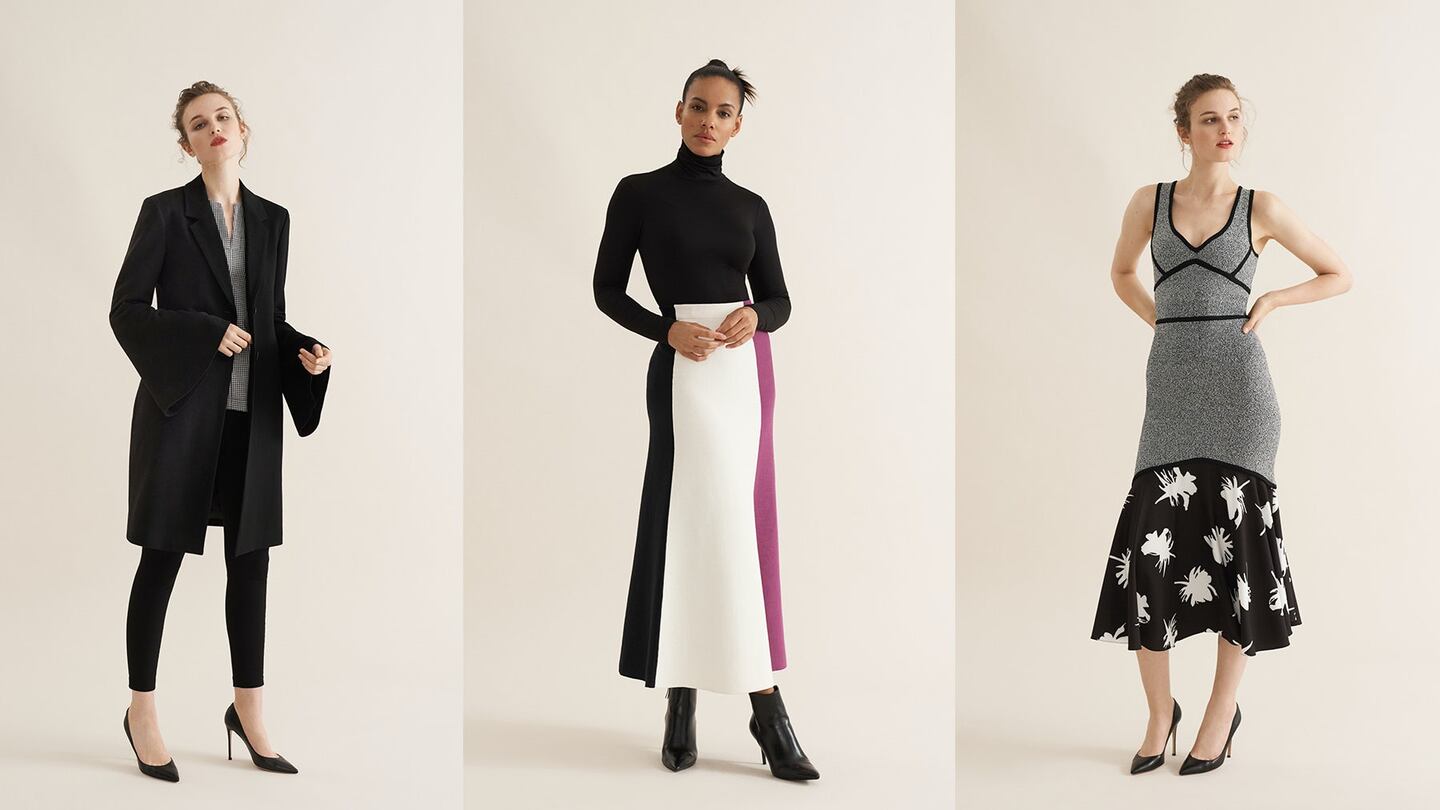
The Business of Fashion
Agenda-setting intelligence, analysis and advice for the global fashion community.

Agenda-setting intelligence, analysis and advice for the global fashion community.

NEW YORK, United States — Rent the Runway has unveiled a set of new clothing lines, working with designers Derek Lam, Prabal Gurung and Jason Wu to produce clothing that will be exclusive to the rental platform.
It’s Rent the Runway's latest move to steal market share from department stores and other multi-brand retailers, which rely on exclusive offerings to drive traffic to their stores. The new “Designer Collective” lines leverage data culled from Rent the Runway customers on fit and preference to constantly adjust the assortment available to borrow. Rent the Runway allows customers to rent clothes rather than buy them, and more than half of its revenue today comes from its Unlimited service, for which customers pay $159 a month for an “endless wardrobe” and can rent up to four items at a time.
“It’s not happening in huge leaps and bounds, but Rent the Runway is definitely chipping away at market share from traditional retail,” said Adheer Bahulkar, partner and specialty retail lead at consultancy A.T. Kearney. “Big retailers like Neiman Marcus and Saks may have to eventually give up margin in order to retain exclusivity with designers.”
Each new line in the Designer Collective will initially feature 10 to 15 items, designed by the respective designers but produced by Rent the Runway. The designers used Rent the Runway’s customer feedback data about fit and preferences as criteria in developing each garment, according to chief merchant officer Sarah Tam.
ADVERTISEMENT
Rent the Runway customers fill out brief surveys every time they return products that they rent from the site. These data points include the average number of times a customer wore a particular item, details about its fit (too small, too large or true-to-size) and the occasion for which the item is worn. The data has shown, for instance, that customers tend to prefer colour over black-and-white and midi hemlines over maxi or mini skirts.
Not every item in the Designer Collective line will be entirely original. In Prabal Gurung’s line, the exclusive pieces will be based on patterns from the designer’s main collection but rendered in custom colours or prints.
“A reality of our business is that we sit at a luxury price point, which isn't accessible for everyone. Partnering with RTR allows us to connect with a younger customer,” Gurung told BoF in an email statement. “We're able to start a relationship with this client … and when she does rent the piece that really resonates with her, that she can't bring herself to return, we've seen it convert, and that’s a beautiful success.”
Retail pricing on the Collective lines fall into the contemporary category, averaging at $350 per piece. The program will expand to include more designers by the end of the year, Tam said.
The Designer Collective isn't the first time Rent the Runway has had original product designed for the platform. In 2014, it launched 5Y, a 25-piece line that included designs from the likes of Christian Siriano and Oscar de la Renta. In 2017, Marchesa — the evening wear line co-designed by Harvey Weinstein's estranged wife, Georgina Chapman — used the rental platform to test out a capsule collection of separates before selling the line at other stockists. Rent the Runway also has a private label line, Slate and Willow, which it introduced in 2015.
“From the designer perspective, there’s a lower risk in working with Rent the Runway because they know so much more about customer preferences,” Bahulkar said.
In November, Rent the Runway started offering brands the option to take a cut of revenue generated from each rental. (Traditionally, Rent the Runway buys product at the beginning of each season like any other multi-brand retailer.) Dubbed Rent the Runway Platform, the program also provides insight to participating brands to create an "ideal assortment" that caters to the RTR customer.
As Rent the Runway continues to scale, the company is not only focused on developing its relationships with vendors but also expanding its physical footprint. In October, it announced 15 new rental drop-off spots at WeWork locations. The company currently has five stores where customers can pick up or drop off their orders and browse products.
ADVERTISEMENT
In 2016, Rent the Runway had estimated sales of over $100 million and a valuation of $750 million, according to PitchBook.
"The potential for Rent the Runway is far bigger than I ever dreamed it would be at the beginning," Rent the Runway founder Jennifer Hyman told BoF in a recent interview. "I really believe we can put the closet in the cloud and that this is a global business and that women all over the world will have a subscription to fashion, but that's going to take more time and more money."
Related Articles:
[ Fashion Can’t Ignore Rent the RunwayOpens in new window ]
[ Rent the Runway’s Jennifer Hyman on Realising Radical IdeasOpens in new window ]
From analysis of the global fashion and beauty industries to career and personal advice, BoF’s founder and CEO, Imran Amed, will be answering your questions on Sunday, February 18, 2024 during London Fashion Week.
The State of Fashion 2024 breaks down the 10 themes that will define the industry in the year ahead.
Imran Amed reviews the most important fashion stories of the year and shares his predictions on what this means for the industry in 2024.
After three days of inspiring talks, guests closed out BoF’s gathering for big thinkers with a black tie gala followed by an intimate performance from Rita Ora — guest starring Billy Porter.